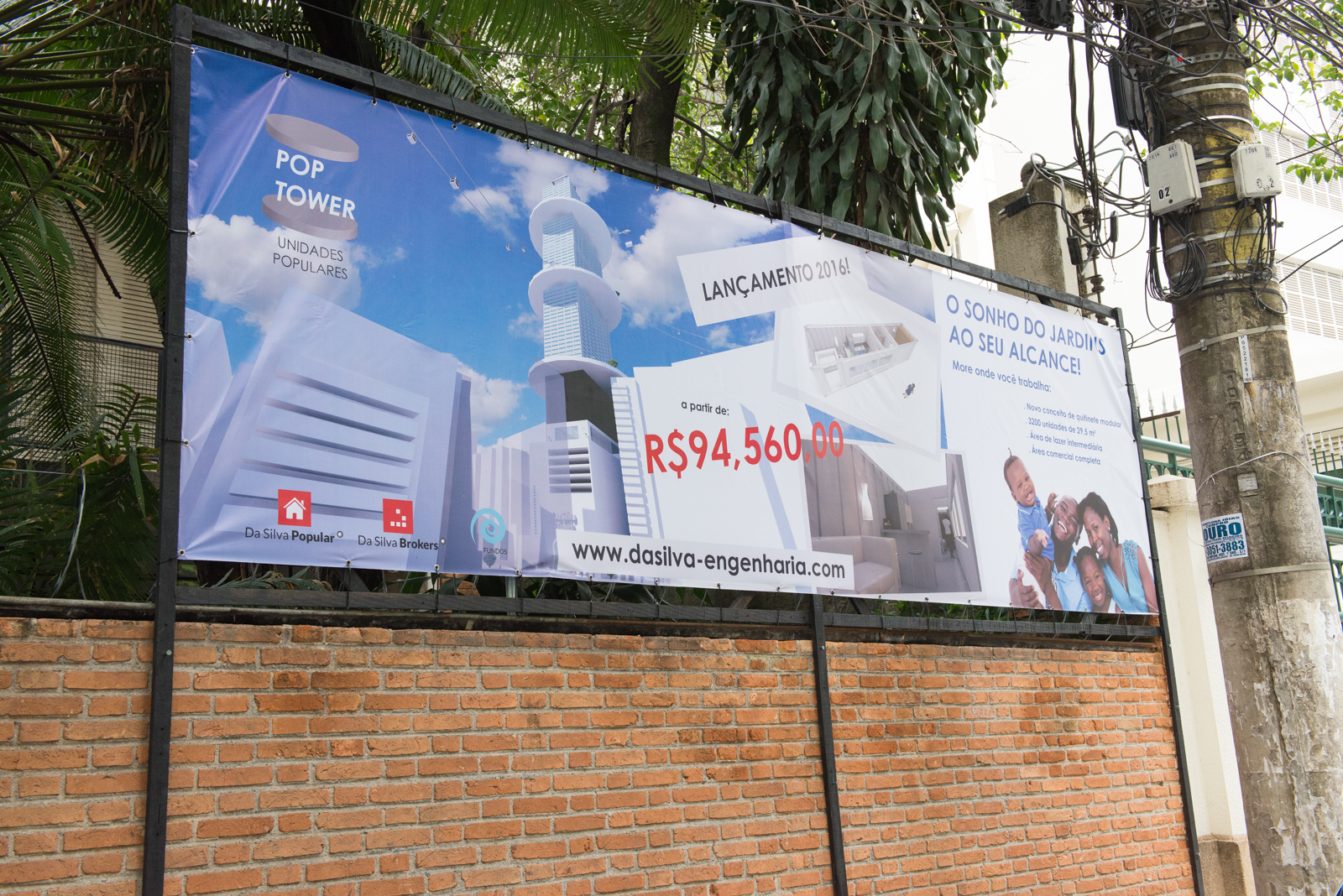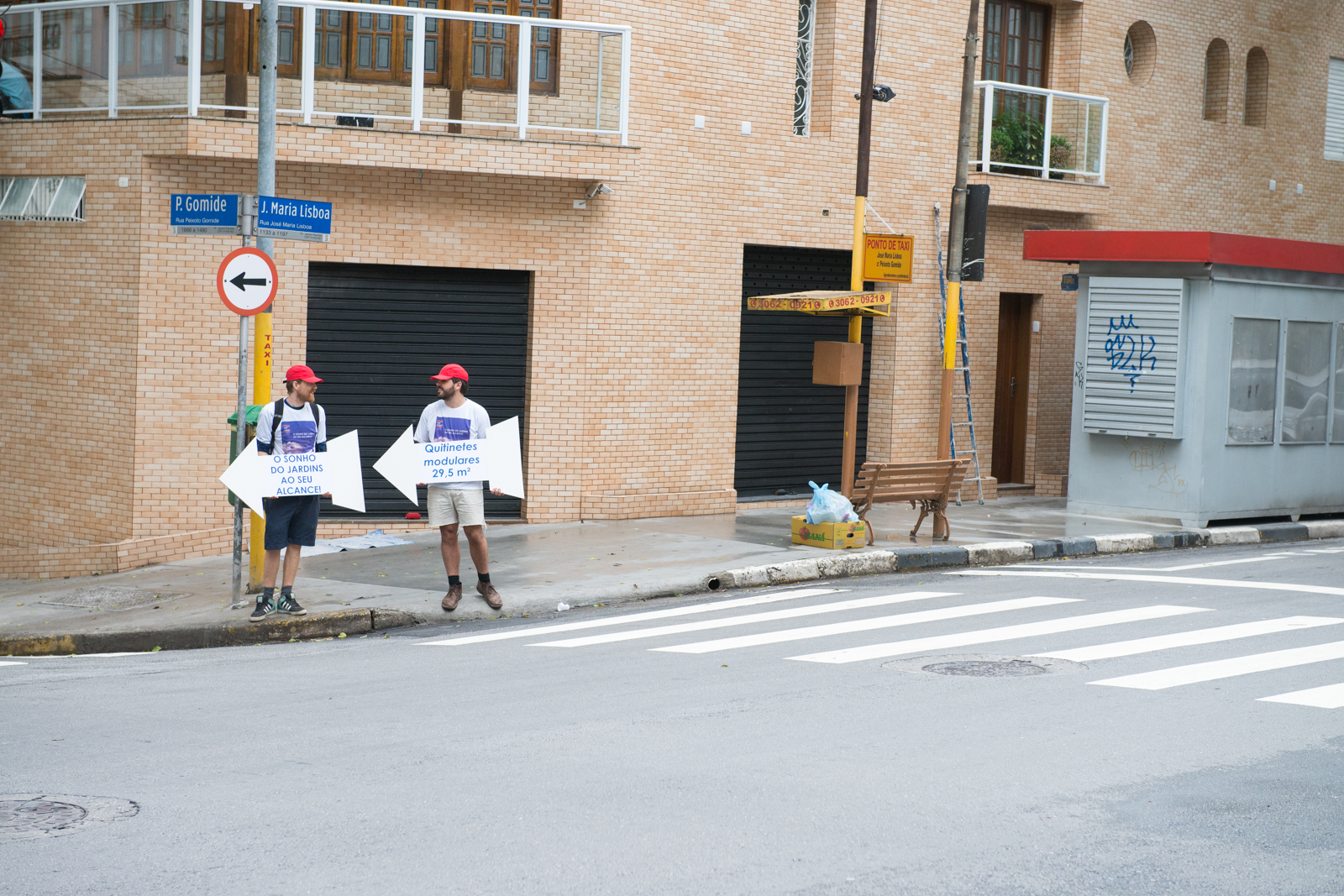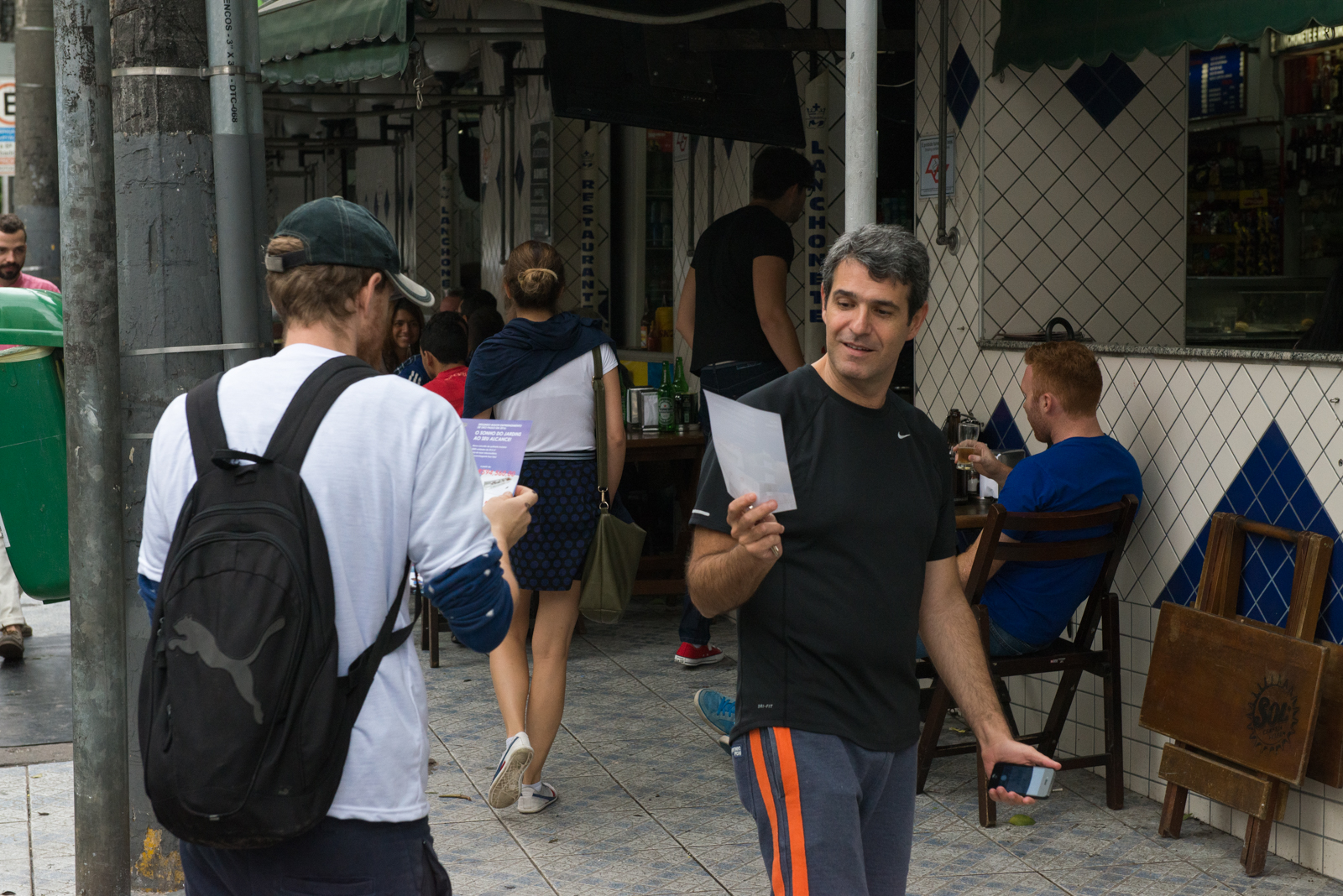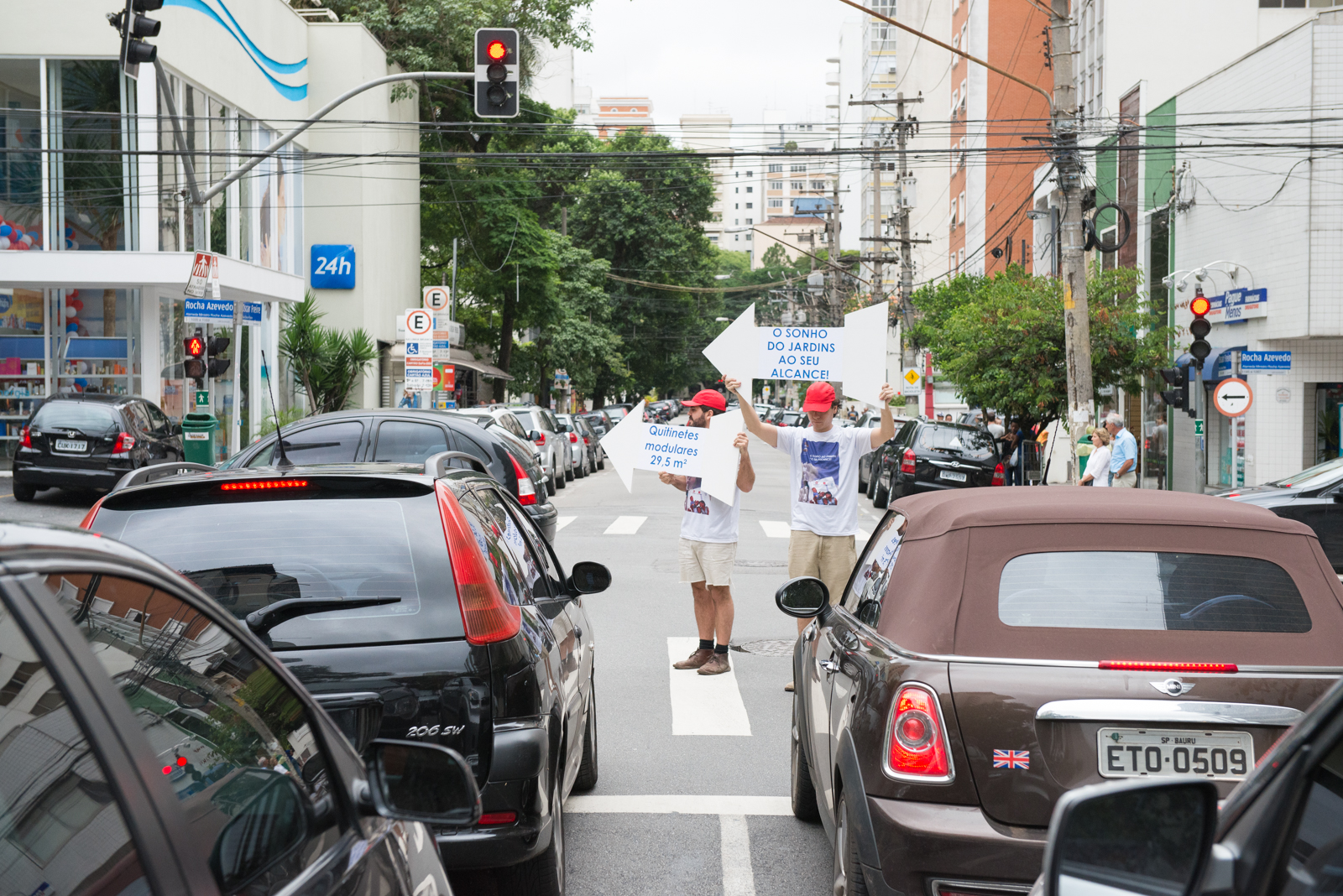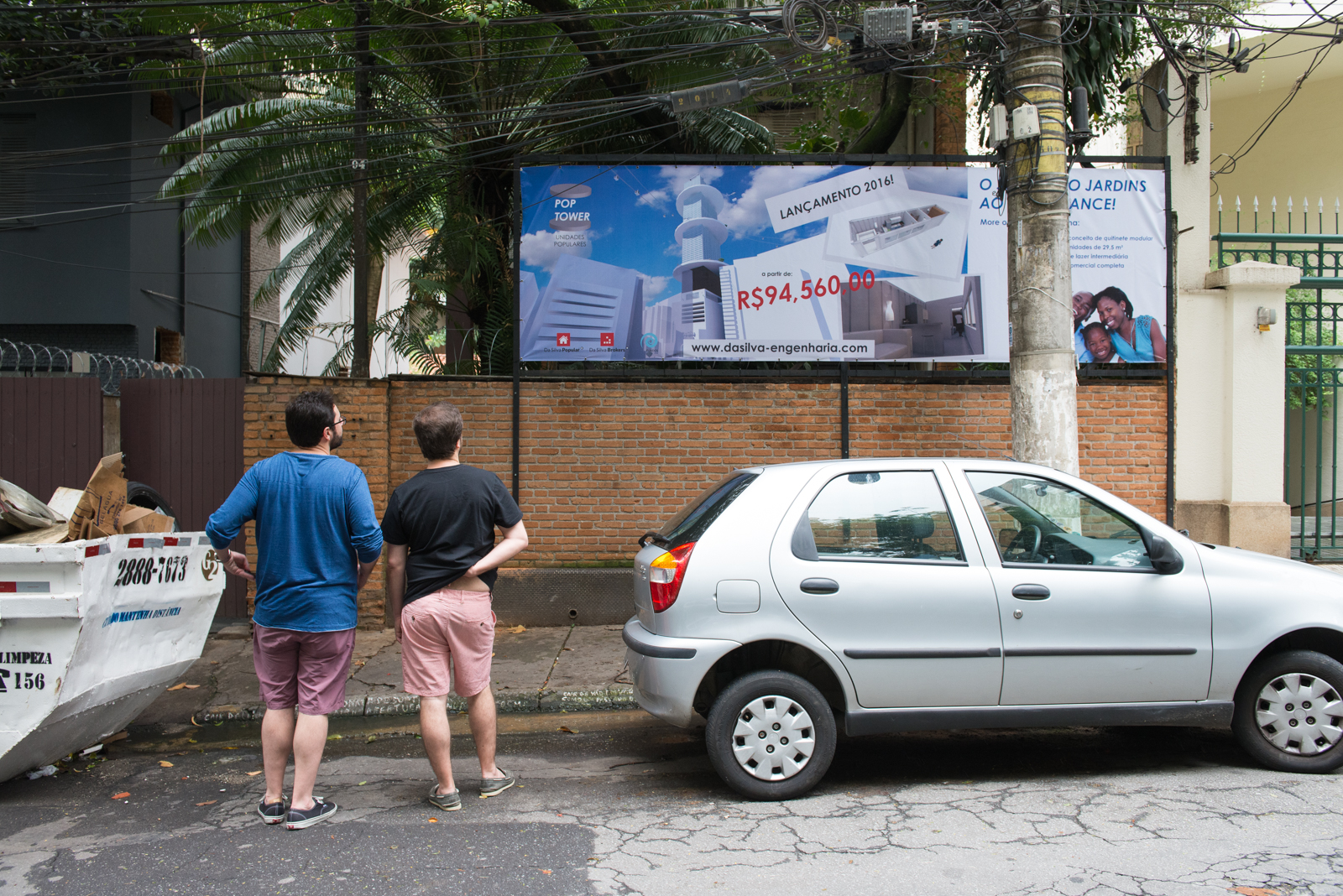At the front of the house a huge banner arises, and throughout the neighbourhood uniformed people provided with large arrows and countless leaflets announces a large real estate development. All of it highlights the news as an excellent opportunity. This is a new construction model, based on modular units. It will be more than three thousand kitchenettes, compact and functional. All of them identical. They say that the building will also have an intermediary leisure and complete commercial area. In the ad, the slogans yell about the arrival of the dream of living in that valued vicinity, and one can see the image of a colossal construction, whose architecture can only be taken as absurd and with futuristic finishing.
Nearby residents and workers in the region have heard about the future building that will be erected there. Their interest is, therefore, reinforced. It seems that, after so much suspense and speculation, they will now finally know the end of the story. On the street the curious and those who reveal amazed are many. Most people prostrate themselves astonished, complaining about what would be a great nonsense, and fiercely criticise aspects of the project. Others show real commercial interest. In the following weeks, added to these reactions is a flood of access on the website and a torrent of messages in the email inbox disclosed in advertising material.
The project named “Pop Tower” – and subtitled “popular units” objectively presents its function –could well be real. However, it is an action-intervention of artist Anton Steenbock, which joins a number of other works conducted in different cities and situations, from a social housing project in the urban center of Jena in Germany to a hotel in the form of a peeled banana in the middle of the Guanabara Bay waters in Rio de Janeiro (providing direct reverence to the idea of Milton Machado, developing it). In the project in question, Anton profits precisely from the waiting and expectation moment to act in the micro period of time that the house will no longer have any more utility, and remains empty until its imminent demolition. With this effort, he provokes, discusses and ventilates questions about aspects of the development process of large cities; the architectural and aesthetic options in vogue; the signs and choices involving the civil construction and the advertising and marketing of their products, and how these forces can be diversely perceived in different economic tiers.
Naturally, it aims to create noise between the people that lives there, which are forced to face a story that supposedly puts an end to a routine situation of comfort. Next to the prospect of a scenario where it would be possible to considerably increase the population density of the street and vastly expand its economic access, perplexity and rage are imminent. The work does not, however, attempt to draw a manichean plot, in which the moral and functional resolutions are easily identifiable. On the contrary, it is a device capable of revealing the complexity of the issues surrounding urban centers. In this sense, the proposed development can be faced by several spectrums. While it is imposed by its gigantism – reflected in a spectacular aesthetics with no identity – about a city saturated in its own growth, which would bear fruit to countless environmental ills, would also serve to promote the approach of abruptly distant social layers, and even, could be a reasonable solution to improve the quality of life and mobility of low-income workers. Next to the image of an infinite story tower is the phrase “The dream of Jardins at your fingertips! Live where you work! “; but its meaning is intentionally dubious: it depends on who reads it.
The action of Anton assumes the specificity of place, time and social context in which it appears to think its own potential for acting. At a first glance it completely eliminates the aesthetic distance from the workpiece before the world by not positioning itself as an artistic gesture. In this process, it deeply penetrates in the urban tissue, and by doing so, emulates everyday icons and figures to shake the fibers that form it. In addition, it intends to unfold itself in its records, expanding the potency of its effects and shooting the discomfort of many problems.
It acts, therefore, as an instrument capable of throwing art into life; that thinks the possibilities and limits of contemporary art production to the extent it directly operates in the perception of the social, economic and cultural conjuncture we find daily at our doorsteps. It is not a prank, a mirror aiming to report great truths with resent, or an infiltration movement into the bowels of a alleged domination dully identified, but a device capable of working towards transformation by synthesising tensions in the core of subjectivity and the practical decisions that shape the future.
Fernando Ticoulat e Germano Dushá
